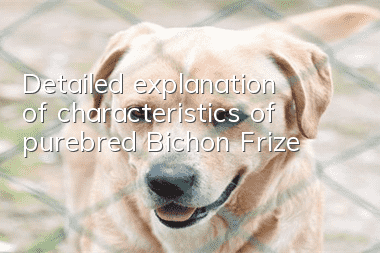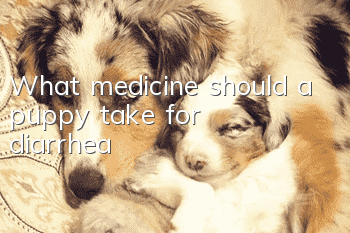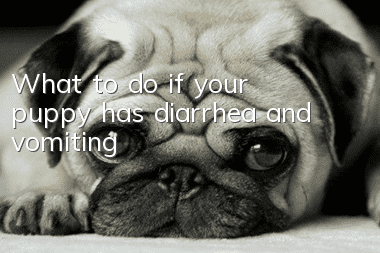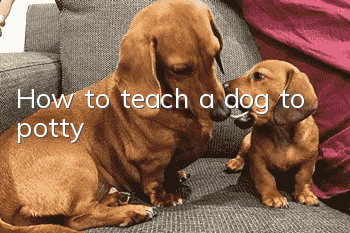Detailed explanation of characteristics of purebred Bichon Frize

The shoulder height of male Bichon Frize and female Bichon Frize is about 9.5 inches to 11.5 inches. Symmetry is the first consideration. If the size exceeds this range, but is proven to be a very good individual, the standard is allowed to be relaxed appropriately. However, height at the withers should not exceed 12 inches or fall below 9 inches. Minimum height at withers standards do not apply to puppies.
Proportion
The body length (the distance from the frontmost point of the chest to the last point of the buttocks) is about 1/4 longer than the shoulder height. The distance from the withers to the base of the chest is approximately 1/2 the distance from the withers to the ground. Constitution: Compact, with medium bone mass. It neither looks rough nor slender.
Gait
The movement of the trot is smooth, accurate and relaxed. Viewed from the side, the extension movements of the front and rear legs are coordinated with each other, the forequarters extend easily, the hindquarters drive powerfully, and the topline remains stable. During exercise, the head and neck are slightly erect, and as the speed increases, the limbs tend to converge toward the center line of the body. When walking away, keep a medium distance between the hind legs and the pads of the feet are visible. Coming or leaving, the movements are precise and correct.
Temperament
Gentle and well-behaved, sensitive, playful, and loving. A cheerful attitude is characteristic of this breed, and it is easy to be satisfied with small things.
Head
1. Soft expression, deep eyes, curious and alert.
2. Eyes are round, black or dark brown.
Directly facing the front. Eyes that are too large or prominent, almond-shaped eyes, and crooked eyes are to be faulted. Around the eyes, black or very dark brown skin surrounds the eyes, which is a must to highlight the eyes and emphasize the expression. The eye rim itself must be black. Insufficient or complete lack of pigment in the eye rims, resulting in a deadpan or dull look, is a definite fault. Eyes of any color other than black or dark brown are to be severely penalized.
3. The ears are droopy and hidden in long and flowing hair. If you pull the ear toward the nose, the length of the pinna can extend to the middle of the muzzle. The ears are set slightly higher than the level of the eyes and relatively forward on the head. So when he is alert, the ears become part of the face.
4. The head is slightly arched, allowing an arc shape toward the eyes. Stop: Slightly defined.
5. The muzzle is very symmetrical to the head. The length ratio of the muzzle to the head is 3:4. The length of the muzzle is the distance from the nose to the stop, and the length of the head is the distance from the stop to the occipital bone. The dotted line connecting the outer corners of the eyes and the tip of the nose forms an equilateral triangle. The contours under the eyes are slightly clearer. But don't go too far and create a weak or tapered front. The jaw is strong.
6. The nose is prominent and always black. Lips: Dark, delicate, but not droopy.
7. Scissor bite. Projection of the palateAn underbite or an underbite is a serious fault. Curved or misaligned teeth are permitted, but missing teeth are a serious fault.
Torso
1. The neck is long and proudly held up, standing behind the head. Smoothly blends into shoulder blades. The length of the neck, from the occipital bone to the withers, is approximately 1/3 of the distance from the forechest to the croup.
2. Level topline, except for a straight, muscular and arched loin. Body: The chest is well developed and its width allows free and unrestricted movement of the forelegs. The lowest point of the chest should extend at least to the elbows. The ribs are moderately sprung and extend well back into the short, muscular loin. The forechest is very distinct and projects slightly forward than the shoulder joints. The lower abdominal curve is moderately lifted.
3. The tail has a lot of hair. The position of the tail is flush with the topline and gently curled behind the back, so the hair on the tail rests against the back. When the tail is extended toward the head, it should reach at least halfway to the withers. A low-set tail, a tail carried perpendicular to the back, or a tail that droops backwards are serious faults. Spiral tails are a serious fault.
4. The length of the scapula and the upper arm bone is approximately equal. The shoulder blades are tilted back, at about a 45-degree angle. The upper arm bone is extended back so that the elbow is just below the withers when viewed from the side.
5. The forelimbs have medium bone mass; the forearms and wrists cannot be arched or bent. Pastern: Slightly sloping relative to the vertical. Dewclaws can be removed.
6. The feet are tight and round, similar to the so-called cat's feet, pointing directly forward, neither turning in nor turning out.
7. The foot pads are black. Toenails: Keep them relatively short.
8. Thighs
The thighs are at an appropriate angle, well muscled and slightly wider apart. The first and second thighs are approximately equal in length and join together at the moderately bent knee joint. The hind legs from hock to toe are completely perpendicular to the ground. Dewclaws can be removed. The soles of the feet are tight and round, and the pads are black.
Coat
1. Texture
The texture of the coat is the most important. The undercoat is soft and thick, and the outer coat is coarse, slightly stiff and curly. The combination of the two types of hair produces a soft and firm feeling when touched, and feels elastic like plush or velvet when patted. After bathing and brushing, the coat stands on the body, creating an overall powder puff effect. A bristly coat is undesirable. A soft coat, a silky coat, a coat that lies flat against the body, or a lack of undercoat are serious faults. Trimming: The coat needs to be trimmed to show the natural curves of the body. All parts should be round in color and should not be cut too short to appear over-trimmed or give a boxy appearance. The head decoration, beard, mustache, ears and tail are kept to a longer length. The long hair on the head is trimmed into a rounded appearance. The topline is trimmed horizontally and the coat must remain of sufficient length to maintain the breed's appearance.Puff-shaped appearance.
2. Color
The color of the Bichon Frize is white, with light yellow, cheese or apricot shades around the ears or on the body. Any other color on a mature individual that exceeds 10% of the total coat is considered a fault. However, the appearance of these permitted colors on the body of a puppy is not considered a fault.
- Introduction to types of dog chew glue
- What to do if your dog is panting and short of breath
- How to clean a kennel
- Introduction to the Characteristics of Purebred Tibetan Mastiff
- How to put on a dog leash
- What are the symptoms of puppy fever?
- What to do if a puppy vomits after eating bones
- Detailed explanation of dog bathing steps
- The difference between Basset and Beagle
- Signs of a dog in heat: a male dog fights and a female dog flushes



